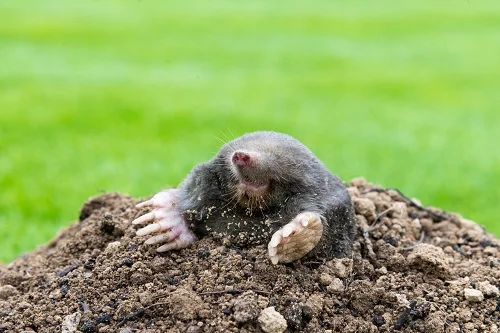Conquering Critters: A Guide to Eliminating Ground Moles with Vinegar
Ground moles, with their relentless tunneling and unsightly mounds of dirt, can wreak havoc on your lawn and garden. While these industrious creatures play a role in aerating the soil and consuming grubs, their destructive digging habits often outweigh any benefits. This comprehensive guide explores the effectiveness of vinegar as a natural method for deterring ground moles, delving into its application methods, safety considerations, and alternative solutions.
Understanding the Enemy: The Habits of Ground Moles
Before tackling a mole problem, it’s crucial to understand their behavior:
- Solitary Creatures: Ground moles are solitary animals, typically living and hunting within their established tunnel networks.
- Underground Dwellers: Moles spend most of their lives underground, venturing to the surface only to create new tunnels or expel excavated dirt.
- Keen Sense of Smell: Moles possess a highly developed sense of smell, which can be exploited for deterring them.
Vinegar: A Natural (and Pungent) Weapon
Vinegar, a readily available household staple, is a popular natural option for deterring ground moles. The pungent acetic acid in vinegar is thought to irritate their sensitive noses, making your yard a less desirable habitat.
Methods of Application: Putting Vinegar to Work
There are two primary methods of using vinegar to deter ground moles:
-
Soaked Sponges or Rags:
- Preparation: Soak rags or sponges in full-strength white vinegar for several hours. The longer they soak, the stronger the scent will be.
- Placement: Strategically place the vinegar-soaked rags or sponges throughout your yard, particularly near existing mole tunnels and molehills.
- Maintenance: Reapply the vinegar solution every few days, especially after heavy rain, to maintain the scent’s potency.
-
Vinegar Solution Spray:
- Mixture: Create a solution of equal parts white vinegar and water in a spray bottle.
- Application: Saturate existing mole tunnels and molehills with the vinegar solution.
- Caution: Avoid spraying directly on plants, as vinegar can harm delicate foliage.
Important Considerations:
- Effectiveness: The effectiveness of vinegar as a mole deterrent can vary. Some homeowners swear by it, while others report limited success. Factors like the severity of the infestation and the persistence of the moles can influence the outcome.
- Safety: Vinegar is generally safe for use around pets and children when used in diluted solutions. However, avoid direct contact with eyes or skin.
- Temporary Solution: The repellent effect of vinegar is temporary. Regular reapplication is necessary to maintain its effectiveness.
Beyond Vinegar: Alternative Solutions for Mole Control
If vinegar proves ineffective or you prefer a more robust approach, here are some alternative solutions:
- Castor Oil Repellent: Castor oil mixed with dish soap and water can be a more potent natural repellent than vinegar.
- Mole Traps: Several types of mole traps are available, offering a more permanent solution. However, proper trap placement and ensuring humane disposal of trapped moles are crucial.
- Professional Pest Control: For severe infestations or if DIY methods fail, consider hiring a professional pest control service. They can offer targeted solutions and ensure humane mole removal.
Restoring Your Lawn: Repairing Mole Damage
Once you’ve successfully deterred the moles, it’s time to address the cosmetic damage caused by their tunneling. Here’s how to restore your lawn:
- Leveling the Ground: Use a rake or shovel to spread the displaced soil from the molehills back into the tunnels and low-lying areas.
- Reseeding Bare Patches: Rake and loosen the compacted soil in areas where the moles have damaged the grass. Reseed these areas with a shade-tolerant or sun-tolerant grass mix depending on the location.
- Watering and Fertilizing: Regularly water the reseeded areas to promote germination and growth. Apply an appropriate lawn fertilizer to encourage healthy grass development.
Frequently Asked Questions (FAQ): Vinegar and the Battle Against Ground Moles
- Is vinegar a safe and effective way to get rid of ground moles?
Vinegar is generally safe for use around pets and children when used in diluted solutions. However, its effectiveness as a mole deterrent can vary.
- How long does it take for vinegar to repel ground moles?
The results may not be immediate. Consistent reapplication over several weeks might be necessary to deter persistent moles.
- What are some signs that vinegar is working?
A decrease in mole activity, such as fewer new molehills, could indicate that the vinegar.






More Stories
Where to Watch USMNT vs Jamaica National Football Team
How I Met My Monster
How Should a Ring Fit